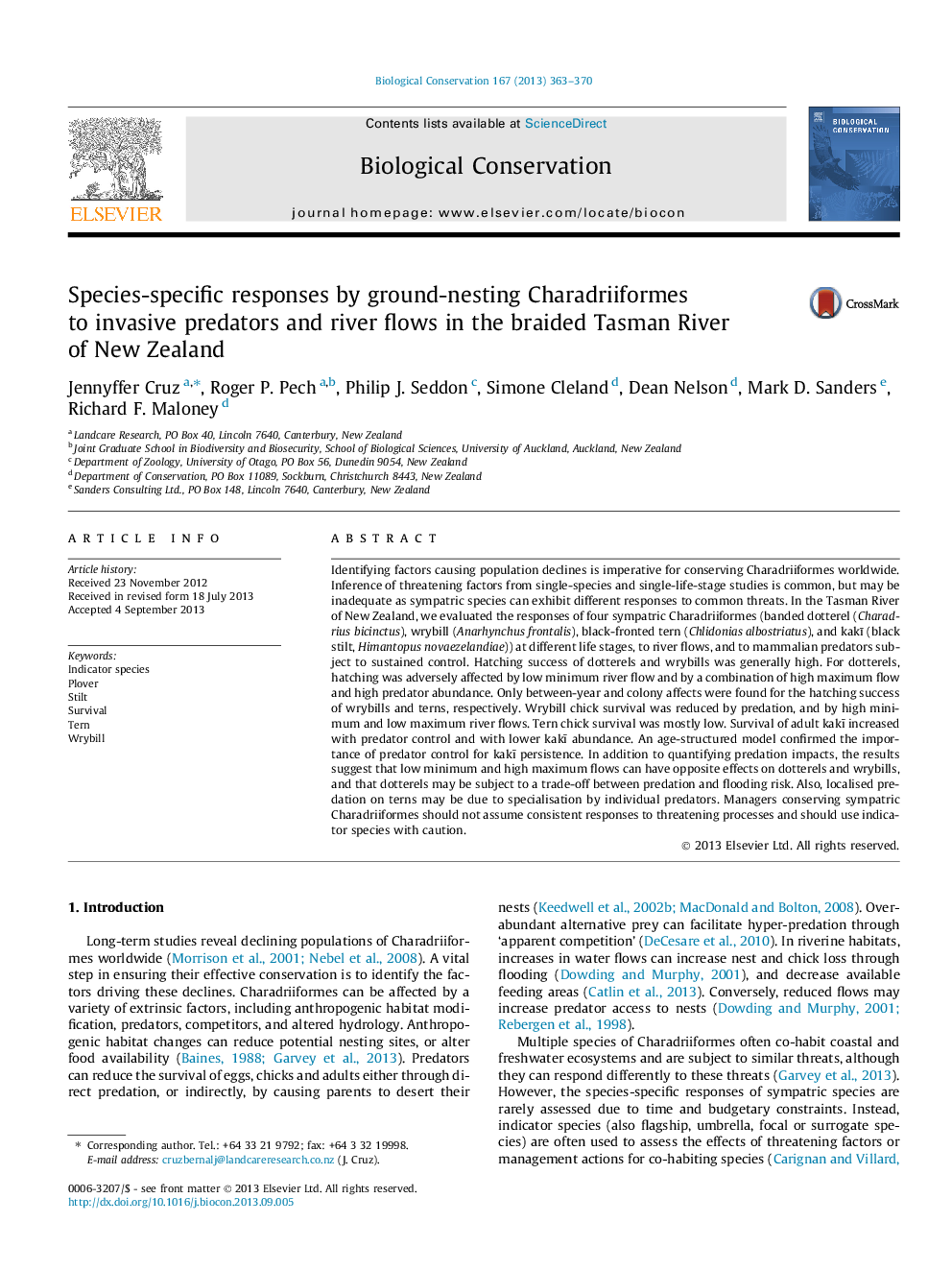| کد مقاله | کد نشریه | سال انتشار | مقاله انگلیسی | نسخه تمام متن |
|---|---|---|---|---|
| 6300654 | 1617934 | 2013 | 8 صفحه PDF | دانلود رایگان |
عنوان انگلیسی مقاله ISI
Species-specific responses by ground-nesting Charadriiformes to invasive predators and river flows in the braided Tasman River of New Zealand
دانلود مقاله + سفارش ترجمه
دانلود مقاله ISI انگلیسی
رایگان برای ایرانیان
موضوعات مرتبط
علوم زیستی و بیوفناوری
علوم کشاورزی و بیولوژیک
بوم شناسی، تکامل، رفتار و سامانه شناسی
پیش نمایش صفحه اول مقاله

چکیده انگلیسی
Identifying factors causing population declines is imperative for conserving Charadriiformes worldwide. Inference of threatening factors from single-species and single-life-stage studies is common, but may be inadequate as sympatric species can exhibit different responses to common threats. In the Tasman River of New Zealand, we evaluated the responses of four sympatric Charadriiformes (banded dotterel (Charadrius bicinctus), wrybill (Anarhynchus frontalis), black-fronted tern (Chlidonias albostriatus), and kakī (black stilt, Himantopus novaezelandiae)) at different life stages, to river flows, and to mammalian predators subject to sustained control. Hatching success of dotterels and wrybills was generally high. For dotterels, hatching was adversely affected by low minimum river flow and by a combination of high maximum flow and high predator abundance. Only between-year and colony affects were found for the hatching success of wrybills and terns, respectively. Wrybill chick survival was reduced by predation, and by high minimum and low maximum river flows. Tern chick survival was mostly low. Survival of adult kakī increased with predator control and with lower kakī abundance. An age-structured model confirmed the importance of predator control for kakī persistence. In addition to quantifying predation impacts, the results suggest that low minimum and high maximum flows can have opposite effects on dotterels and wrybills, and that dotterels may be subject to a trade-off between predation and flooding risk. Also, localised predation on terns may be due to specialisation by individual predators. Managers conserving sympatric Charadriiformes should not assume consistent responses to threatening processes and should use indicator species with caution.
ناشر
Database: Elsevier - ScienceDirect (ساینس دایرکت)
Journal: Biological Conservation - Volume 167, November 2013, Pages 363-370
Journal: Biological Conservation - Volume 167, November 2013, Pages 363-370
نویسندگان
Jennyffer Cruz, Roger P. Pech, Philip J. Seddon, Simone Cleland, Dean Nelson, Mark D. Sanders, Richard F. Maloney,